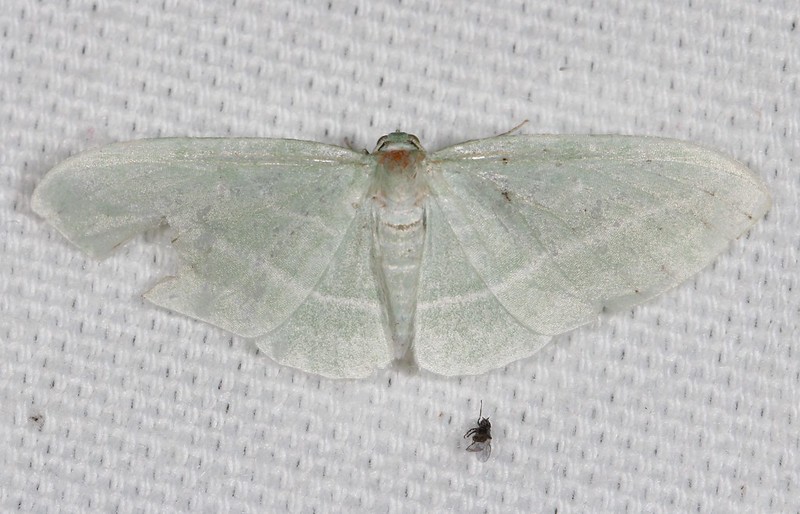Map Snapshot


















247 Records
Seasonality Snapshot
Use of media featured on Maryland Biodiversity Project is only permitted with express permission of the photographer.
A Badwing Moth in Frederick Co., Maryland (7/22/2015).
View Record Details
Media by
Bonnie Ott.
A Badwing Moth in Worcester Co., Maryland (5/28/2013).
View Record Details
Media by
Mike Burchett.
A Badwing Moth in Allegany Co., Maryland (7/27/2013).
View Record Details
Media by
Matt Tillett.
A Badwing Moth in Frederick Co., Maryland (5/30/2015). Verified by Roger Downer/BAMONA.
View Record Details
Media by
Mark Etheridge.
A Badwing Moth in Frederick Co., Maryland (7/22/2015).
View Record Details
Media by
Richard Orr.
A Badwing Moth in Harford Co., Maryland (6/26/2019).
View Record Details
Media by
Richard Crook.
A Badwing Moth in Baltimore Co., Maryland (7/15/2014).
View Record Details
Media by
Emily Stanley.
A Badwing Moth in Harford Co., Maryland (8/20/2017).
View Record Details
Media by
Bonnie Ott.
A Badwing Moth in Harford Co., Maryland (5/24/2020).
View Record Details
Media by
Dave Webb.
A Badwing Moth along the Potomac River in Washington Co., Maryland (6/4/2006).
View Record Details
Media by
Jim Brighton.
A Badwing Moth in Washington Co., Maryland (5/23/2019).
View Record Details
Media by
Mark Etheridge.
Badwing Moth in Anne Arundel Co., Maryland (6/23/2019). (c) Timothy Reichard, all rights reserved.
View Record Details
Media by
Timothy Reichard.
A Badwing Moth in Howard Co., Maryland (7/9/2014).
View Record Details
Media by
Nancy Magnusson.
Badwing Moth in Anne Arundel Co., Maryland (5/23/2016).
View Record Details
Media by
Robert Aguilar, SERC.
A Badwing Moth in Baltimore Co., Maryland (8/5/2020). Verified by Roger Downer/BAMONA.
View Record Details
Media by
Dave Webb.
A Badwing Moth in Harford Co., Maryland (6/25/2017).
View Record Details
Media by
Dave Webb.
A Badwing Moth in Anne Arundel Co., Maryland (6/2/2017). Determined by Hugh McGuinness/INaturalist.
View Record Details
Media by
Sue Muller.
A Badwing Moth in Baltimore Co., Maryland (7/26/2015).
View Record Details
Media by
Jeff Ripps.
Badwing Moth in Baltimore Co., Maryland (8/17/2022). (c) Whitni Brown, some rights reserved (CC BY-NC-SA).
View Record Details
Media by
creepthecreek via iNaturalist.
A Badwing Moth in Calvert Co., Maryland (4/23/2006).
View Record Details
Media by
Arlene Ripley.
A Badwing Moth in Howard Co., Maryland (2006).
View Record Details
Media by
Larry Line.
A Badwing Moth in Harford Co., Maryland (7/9/2017).
View Record Details
Media by
Josh Emm.
Source: Wikipedia
| Dyspteris abortivaria | |
|---|---|

| |
| Scientific classification | |
| Domain: | Eukaryota |
| Kingdom: | Animalia |
| Phylum: | Arthropoda |
| Class: | Insecta |
| Order: | Lepidoptera |
| Family: | Geometridae |
| Genus: | Dyspteris Hübner, 1818 |
| Species: | D. abortivaria
|
| Binomial name | |
| Dyspteris abortivaria (Herrich-Schaffer, 1855)
| |
Dyspteris is a genus of moths in the family Geometridae and was erected by Jacob Hübner in 1818. It is monotypic, being represented by a single species, Dyspteris abortivaria, commonly known as the bad-wing. This species was first described by Gottlieb August Wilhelm Herrich-Schäffer in 1855 and is found in North America.[1][2][3][4][5]
It is called "bad-wing" because its forewing is much larger than its hindwing, making it often difficult to pull into position for spreading.[6]

References
[edit]- ^ "Dyspteris abortivaria (Herrich-Schäffer, 1855)". Integrated Taxonomic Information System. Retrieved April 30, 2018.
- ^ "Species Details: Dyspteris abortivaria Herrich-Schäffer, 1858". Catalogue of Life. Retrieved April 30, 2018.
- ^ "Dyspteris abortivaria Herrich-Schäffer, 1858". Global Biodiversity Information Facility. Retrieved April 30, 2018.
- ^ Cotinis (April 28, 2012). "Species Dyspteris abortivaria - The Bad-Wing - Hodges#7648". BugGuide. Retrieved April 30, 2018.
- ^ Savela, Markku. "Dyspteris Hübner, 1818". Lepidoptera and Some Other Life Forms. Retrieved May 18, 2019.
- ^ Lotts, Kelly & Naberhaus, Thomas (2017). "The Bad-wing Dyspteris abortivaria (Herrich-Schäffer, 1855)". Butterflies and Moths of North America. Retrieved June 9, 2019.
Further reading
[edit]- Beadle, David; Leckie, Seabrooke (2012). Peterson Field Guide to Moths of Northeastern North America. Virginia Museum of Natural History. ISBN 0547238487.
- Covell, Charles V. Jr. (2005). A Field Guide to Moths of Eastern North America. Special Publication Number 12. Virginia Museum of Natural History. ISBN 1-884549-21-7.
- Grote, Aug.R.; Robinson, C.T. (1868). List of the Lepidoptera of North America. American Entomological Society.
- Heppner, J.B. (2003). "Lepidoptera of Florida. Part 1. Introduction and catalog" (PDF). Arthropods of Florida and Neighboring Areas. 17. Florida Department of Agriculture and Consumer Services. ISSN 0066-8036. Archived from the original (PDF) on 2018-04-23. Retrieved 2019-05-18.
- Hodges, Ronald W., ed. (1983). Check List of the Lepidoptera of America North of Mexico: Including Greenland. E.W. Classey and The Wedge Entomological Research Foundation. ISBN 9780860960164.
- Holloway, J.D. (1997). Family Geometridae, subfamilies Sterrhinae and Larentiinae. The Moths of Borneo. Vol. part 10. Southdene Sdn. Bhd. ISBN 983999154X.
- Pohl, Greg; Patterson, Bob; Pelham, Jonathan (2016). Annotated taxonomic checklist of the Lepidoptera of North America, North of Mexico (Report). doi:10.13140/RG.2.1.2186.3287.
- Powell, Jerry A.; Opler, Paul A. (2009). Moths of Western North America. University of California Press. ISBN 9780520251977.
- Viidalepp, Jaan (2006). "Cladistic analysis of the subfamily Larentiinae". Spixiana. 29 (3): 202–203. ISSN 0341-8391.
- Yamamoto, Satoshi; Sota, Teiji (2007). "Phylogeny of the Geometridae and the evolution of winter moths inferred from a simultaneous analysis of mitochondrial and nuclear genes". Molecular Phylogenetics and Evolution. 44: 711–723. ISSN 1055-7903.
External links
[edit] Media related to Dyspteris abortivaria at Wikimedia Commons
Media related to Dyspteris abortivaria at Wikimedia Commons





















